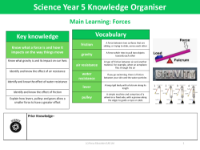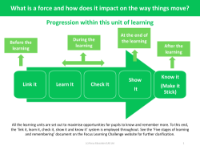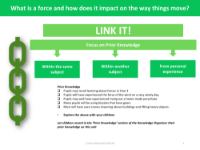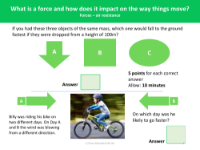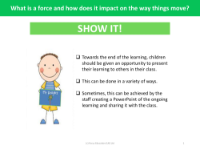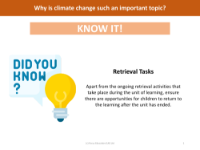Long-term overview - Forces - Year 5
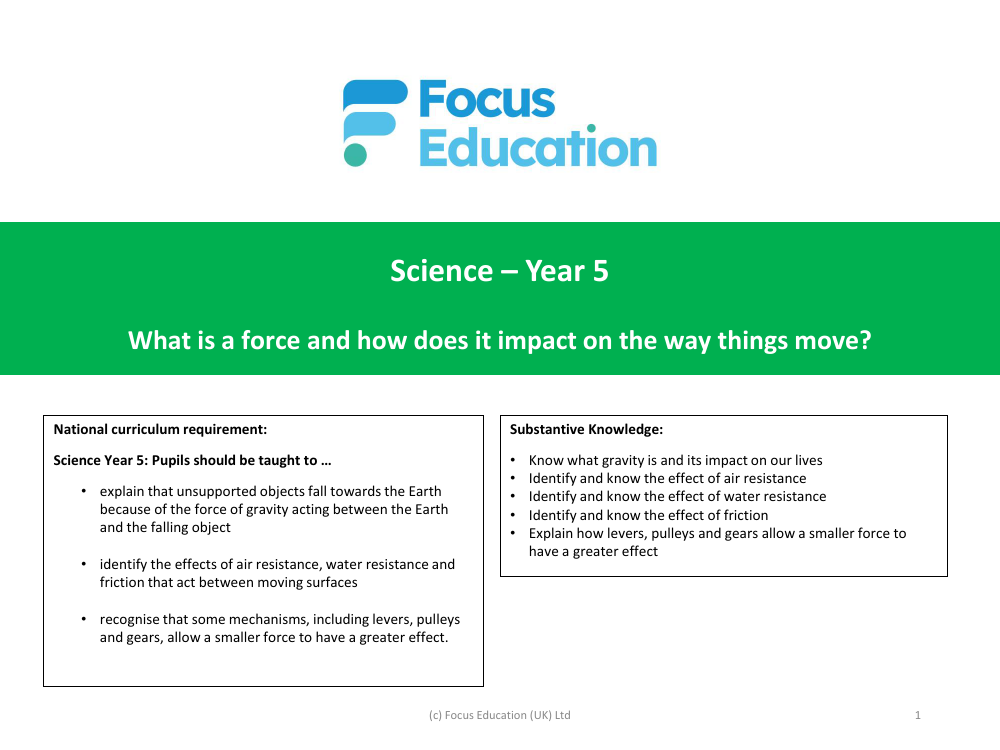
Science Resource Description
In the Year 5 science curriculum, pupils delve into the intriguing world of forces, exploring the fundamental principles that explain how and why objects move. They are taught to understand the concept of gravity and its significance, learning that unsupported objects fall towards Earth due to the gravitational attraction between the planet and the object. The curriculum also covers the effects of different types of resistance – air and water – as well as the force of friction that occurs between moving surfaces. These forces play a critical role in the movement of objects and are essential for students to recognise and comprehend.
Beyond these natural forces, the curriculum introduces pupils to simple machines such as levers, pulleys, and gears. These mechanisms demonstrate how a smaller force can be amplified to achieve a greater effect, an important concept in physics and engineering. Through various activities and experiments, students will investigate how the shape of an object influences its movement through water, how surface materials affect the distance and speed of an object on a ramp, and how gears can be utilised to increase the efficiency of applied forces. This unit on forces not only builds upon knowledge from Year 3 but also integrates with the design and technology curriculum, highlighting the practical applications of these scientific concepts in everyday life.
